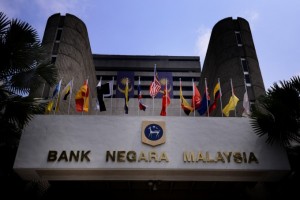Banking on banks to have a heart

The timing of commercial banks in raising their BLR by 10 basis points almost on cue about a month ago is surprising to the man in the street. Did these banks have prior knowledge of the timing of the announcement by Bank Negara?
Walter Sandosam, The Star
ON May 7, Bank Negara revised downwards the overnight policy rate (OPR) by a quarter percentage point (or 25 basis points in banking jargon). The OPR is a reference point against which commercial banks set their base lending rate (BLR).
Loans are normally priced against BLR with a spread above that rate to reflect the credit risk element of individual stratified borrowers – the lower the credit risk, the less the spread and vice versa.
The main purpose of lowering the OPR (which has a consequential effect on the BLR) is to reduce the cost of borrowing to stimulate loan growth. This is a proactive response by the central bank – as part of monetary policy – to an anticipated slowdown in the economy.
The cut in OPR is a pre-emptive measure in anticipation of such a scenario. The negative consequence is that the interest paid on customers’ deposits is lowered as banks have to maintain the differential between deposit and lending rates.
These deposit placements are mainly from retirees and those with accumulated savings who would be worse off as their revenue streams would be affected.
Analysts had predicted a lowering of the OPR but expected it in the middle of the year and possibly even the third quarter.
Against this backdrop, the timing of commercial banks in raising their BLR by 10 basis points almost on cue about a month ago is surprising to the man in the street. Did these banks have prior knowledge of the timing of the announcement by Bank Negara? If so, this is tantamount to “insider trading” based on information not freely available to all the market players.
Surely it cannot be an educated guess as only 14 of the 23 analysts polled predicted a rate reduction. And even then, they (who are market experts) were unsure of the timing with comments like “rate cut came earlier than expected”, as reported in “Limited impact seen from OPR cut” (StarBiz, May 8).
An analyst from MIDF Research revealed that more than five banks had already increased their base rate by an average of 10 basis points (bps). With this rate cut, lending rates of the banks would go lower but not by 25 bps, the analyst was quoted as saying.
It appears that the market consensus is 15%.
The country’s largest lender has announced a 20bps decrease. This appears magnanimous.
If Bank Negara sets a rate cut of 25bps to stimulate the economy by lowering the cost of borrowing, is it too much for the public to expect this entire amount to be passed down, as opposed to a net of about 15bps (having already increased the lending rate by 10bps earlier)?
This is against the backdrop of billions of ringgit being reported as revenue and net profit by the main lenders. Obviously, this is at the expense of the common man who is financially burdened with interest expense on loans having being factored in the cost on monthly instalments.
Are banks neglecting the element of social responsibility, which is clearly written as part of integrated reporting in their annual report?
We are not talking of compromising on loan quality here, as lowering of interest rates on par with the OPR cut quantum will be applicable to the current customer base who have met the stringent criteria heavily used by banks in recent years to determine creditworthiness.
All things remaining equal, imagine the effect of 5bps, which have not been passed down to customers, on the increase in earnings to banks.
Currently, there are grouses over interest not being paid on depositors’ premature withdrawal of deposits as the term had not been completed. Meanwhile, credit card issuers continue to charge 15% to 18% interest and late fees being an added feature.
Previously, banks allowed an allowance of three days after “due date” for payments to be made before the late charges are levied. Sadly, this allowance has ceased, and banks are ever ready to levy charges for late payment now.
This, coupled with the billions left idle in current and savings accounts on which no interest is paid, is to be used to reduce the overall funding costs of banks!
In such an environment, it does not take much to report ever increasing profits yearly. Is this ethical?
The Finance Minister has gone on record in requesting the public to escalate complaints to his ministry if there were difficulties in getting approval for loans. He has taken a bold stand notwithstanding that the Finance Ministry and Bank Negara are separate entities with specific responsibilities.
By convention, for independence, one does not infringe on the activities of each other. Of importance here is the role of Bank Negara. The minister does not have to enter the fray.
Is all well in the banking industry or is it leaning in the wrong direction as the economy softens? The laments of those who are not able to secure loans ring loudly. Surely all are not “bad credits”.
Is Bank Negara, which has to monitor banks effectively on their “social responsibility”, being silently tolerant? If so, perhaps a rethink on the needs of the economy and, more importantly, the challenges and financial constraints by those who avail themselves to banking services is called for.
One can recall instances in the past when local banks were “encouraged” to open branches in rural areas where returns were not lucrative, the only rationale being that the outlying sleepy hollows were not deprived of essential banking services. That was responsible banking to help society.
WALTER SANDOSAM
Retired commercial bank executive

